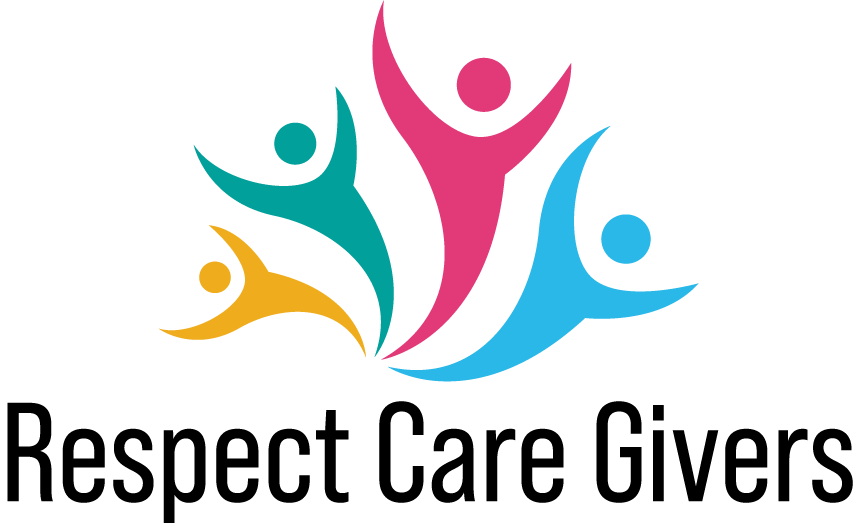
When it comes to exercising with fibromyalgia, it is important to start slowly and gradually increase the intensity and duration of workouts. This can help prevent flare-ups and reduce the risk of injury. Low-impact exercises, such as walking, swimming, and yoga, are often recommended for people with fibromyalgia. These activities can help improve flexibility, strength, and endurance without putting too much strain on the body. Additionally, stretching before and after exercise can help reduce muscle stiffness and soreness.
Understanding Fibromyalgia and Exercise
Fibromyalgia is a chronic pain condition that affects millions of people worldwide. It is characterized by widespread pain, fatigue, and tenderness in the muscles, joints, and soft tissues. People with fibromyalgia may also experience sleep disturbances, headaches, and cognitive problems, such as difficulty concentrating and remembering things.
Exercise is an important part of managing fibromyalgia symptoms. However, it can be challenging to find the right balance between staying active and avoiding flare-ups. It is essential to understand how fibromyalgia affects the body and how exercise can help to alleviate symptoms.
People with fibromyalgia have a lower pain threshold than those without the condition. This means that they may experience pain and discomfort at lower levels of physical activity than others. It is important to start with low-impact exercises, such as walking, swimming, and cycling, and gradually increase the intensity and duration as tolerated.
Exercise can help to reduce pain and stiffness, improve sleep quality, and boost mood and energy levels. However, it is important to listen to the body and avoid overdoing it. Rest and recovery are just as important as exercise for managing fibromyalgia symptoms.
Choosing the Right Type of Exercise
When living with fibromyalgia, choosing the right type of exercise is crucial. Regular physical activity can help reduce pain, improve mobility, and boost mood. However, it is essential to choose exercises that are gentle on the body and do not exacerbate symptoms.
Low-Impact Aerobic Activities
Low-impact aerobic activities are an excellent choice for people with fibromyalgia. These exercises can help improve cardiovascular health, increase endurance, and reduce pain and stiffness. Some examples of low-impact aerobic activities include:
- Walking
- Swimming
- Cycling
- Water aerobics
- Tai Chi
- Yoga
Strength Training
Strength training can help improve muscle strength and endurance, which can reduce pain and improve overall function. However, it is essential to start with light weights and progress gradually. Some examples of strength training exercises include:
- Resistance band exercises
- Bodyweight exercises, such as squats and lunges
- Light weightlifting
Flexibility Exercises
Flexibility exercises can help improve range of motion and reduce stiffness. Some examples of flexibility exercises include:
- Stretching
- Yoga
- Pilates
Balance Exercises
Balance exercises can help improve stability and reduce the risk of falls. Some examples of balance exercises include:
- Standing on one leg
- Tai Chi
- Yoga
Overall, it is essential to choose exercises that are gentle on the body and do not exacerbate symptoms. It is also crucial to start slowly and progress gradually, listening to the body and adjusting as needed. By choosing the right type of exercise, people with fibromyalgia can improve their overall health and quality of life.
Creating an Exercise Routine
When it comes to exercising with fibromyalgia, it’s important to create a routine that is tailored to your specific needs. Here are some tips to help you create an exercise routine that works for you.
Setting Realistic Goals
Setting realistic goals is essential when it comes to exercising with fibromyalgia. It’s important to start small and gradually increase the intensity and duration of your workouts. For example, if you haven’t exercised in a while, start with a 10-minute walk and gradually increase the time as you feel comfortable.
Gradual Progression
Gradual progression is key when it comes to exercising with fibromyalgia. It’s important to start with low-impact exercises and gradually progress to higher intensity exercises. This will help you avoid injury and prevent flare-ups.
Incorporating Rest Days
Incorporating rest days into your exercise routine is important when you have fibromyalgia. Rest days allow your body to recover and prevent overexertion. It’s important to listen to your body and take rest days as needed.
To summarize, creating an exercise routine when you have fibromyalgia requires setting realistic goals, gradual progression, and incorporating rest days. By following these tips, you can create an exercise routine that works for you and helps you manage your fibromyalgia symptoms.
Listening to Your Body
When exercising with fibromyalgia, it’s important to listen to your body. This means paying attention to how your body feels during and after exercise and adjusting your routine accordingly. Pushing through pain or discomfort can lead to further injury and setbacks in your fitness journey.
Here are some tips for listening to your body while exercising with fibromyalgia:
- Start slow: Begin with low-impact exercises and gradually increase intensity and duration as your body allows.
- Monitor your heart rate: Keep track of your heart rate during exercise to make sure you’re not pushing yourself too hard. A heart rate monitor can be helpful for this.
- Take breaks: Don’t be afraid to take breaks during your workout if you need to. Resting when your body tells you to can prevent injury and help you stay motivated in the long run.
- Stretch: Incorporate stretching into your routine to improve flexibility and reduce muscle tension. Be sure to stretch after your workout as well to help prevent soreness and stiffness.
- Stay hydrated: Drink plenty of water before, during, and after exercise to help prevent dehydration. Dehydration can worsen fibromyalgia symptoms.
- Keep a journal: Keep track of your workouts and how your body responds to them. This can help you identify patterns and adjust your routine accordingly.
By listening to your body and making adjustments as needed, you can safely and effectively exercise with fibromyalgia.

Working with a Physical Therapist
Physical therapy can be an effective way to manage fibromyalgia symptoms and improve overall physical function. A physical therapist can work with individuals to develop a personalized exercise plan that takes into account their specific symptoms and limitations.
During the initial evaluation, the physical therapist will assess the individual’s current level of physical function and identify any areas of weakness or pain. Based on this assessment, the physical therapist will develop an exercise plan that includes exercises to improve strength, flexibility, and cardiovascular endurance.
The physical therapist will also work with the individual to ensure that they are using proper form and technique during exercises to prevent injury and maximize the benefits of the exercise. They may also recommend modifications to exercises to accommodate any physical limitations or pain.
In addition to exercise, physical therapy may also include other treatments such as manual therapy, massage, or modalities like heat or ice. These treatments can help to reduce pain, improve mobility, and promote relaxation.
Working with a physical therapist can be a valuable part of a comprehensive fibromyalgia treatment plan. By developing a personalized exercise plan and receiving guidance and support from a trained professional, individuals with fibromyalgia can improve their physical function and overall quality of life.
Overcoming Exercise Challenges
People with fibromyalgia often face several challenges when it comes to exercising. However, with the right approach, it is possible to overcome these challenges and enjoy the benefits of exercise. Here are some tips to help:
Start Slowly
It is essential to start exercising slowly and gradually increase the intensity and duration of the workout. This can help prevent flare-ups and reduce the risk of injury. It is recommended to start with gentle exercises such as walking, swimming, or yoga.
Listen to Your Body
People with fibromyalgia often experience pain and fatigue, which can make it challenging to exercise. It is essential to listen to your body and take breaks when needed. It is okay to reduce the intensity or duration of the workout if you feel tired or in pain.
Find a Supportive Environment
Exercising with fibromyalgia can be challenging, but having a supportive environment can make a significant difference. Joining a support group or finding a workout buddy can provide motivation and accountability. It is also essential to communicate with your healthcare provider and seek their guidance before starting any exercise program.
Use Heat or Cold Therapy
Heat or cold therapy can help alleviate pain and stiffness associated with fibromyalgia. Applying heat or cold to the affected area before or after exercise can help reduce pain and improve mobility.
Incorporate Strength Training
Strength training can help improve muscle strength and flexibility, which can be beneficial for people with fibromyalgia. It is recommended to start with light weights and gradually increase the intensity. Resistance bands can also be used for strength training.
Stay Hydrated
Staying hydrated is essential for everyone, but it is especially important for people with fibromyalgia. Dehydration can worsen symptoms such as fatigue and muscle pain. It is recommended to drink plenty of water before, during, and after exercise.
Use Proper Form
Using proper form during exercise can help prevent injury and reduce pain. It is recommended to seek guidance from a certified trainer or physical therapist to ensure proper form.
Take Rest Days
Rest days are essential for recovery and preventing burnout. It is recommended to take at least one or two rest days per week and listen to your body if you need more.
By following these tips, people with fibromyalgia can overcome exercise challenges and enjoy the benefits of physical activity.
Conclusion
In conclusion, exercising with fibromyalgia can be a challenging task, but it is not impossible. By following the tips and guidelines mentioned in this article, individuals can safely and effectively incorporate exercise into their daily routine.
It is important to start slowly and gradually increase the intensity and duration of the exercise. Listening to the body and not pushing beyond its limits is crucial to prevent flare-ups and injuries. Additionally, finding a form of exercise that is enjoyable and fits one’s interests and lifestyle can help increase motivation and adherence.
Incorporating other self-care practices such as stretching, relaxation techniques, and adequate sleep can also help manage fibromyalgia symptoms and improve overall well-being. Consulting with a healthcare provider or a physical therapist before starting an exercise program is highly recommended.
Remember, every individual with fibromyalgia is unique, and what works for one person may not work for another. It is essential to find what works best for oneself and make adjustments accordingly. With patience, persistence, and a positive attitude, individuals with fibromyalgia can reap the benefits of exercise and improve their quality of life.
